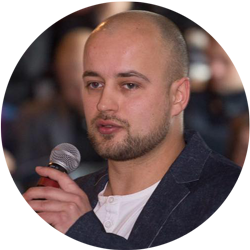Creative theory
"All innovations [begin] as creative solutions, but not all creative solutions become innovations." — Richard Fobes Many techniques and tools employed for creating effective solutions to a problem are described in creativity techniques and problem-solving articles. We provide for you just a small part of it. Hope it will be catchy and you will dig for more.

Why did I choose this tool?
In such a variety of tools, we (the authors) use the main techniques which we know will work. But in order to know the differences you should broaden your knowledge and here is a lot of material for e-learning about creativity methods, techniques and moreover some research that is interesting and valuable. This knowledge enables you to feel comfortable using one or another method.
How does this apply to being a trainer?
Recognize factors which block your creativity could help you to support learners to be more creative (while creating atmosphere, choosing methods there are no “blocking factors” or you know how to mitigate them if it appears). Moreover, this exercise increases your awareness about creativity techniques and later on lead you to your own “google” path.
Main content:
Try out several creativity techniques and methods to understand how they work and how they can be applied in youth trainings.
Creative problem-solving technique categories:
- Mental state shift and cognitive reframing: Changing one’s focus away from active problem-solving and towards a creative solution set.
- Multiple idea facilitation: Increasing the number of fresh ideas based on the belief that a greater number of ideas will raise the chances that one of these is valuable. This may include randomly selecting an idea (such as choosing a word from a list) and thinking about its similarities to the situation. In turn, this random act may inspire a related idea that would lead to a solution.
- Inducing a change of perspective: Efficiently entering a fresh perspective may result in a solution that thereby becomes obvious. This is especially useful for solving particularly challenging problems. Many techniques to this end involve identifying independent dimensions that differentiate closely associated concepts. Differentiating concepts helps to overcome a tendency to use oversimplified associative thinking, in which two related concepts are so closely associated that their differences are overlooked.
Team communication norms, such as respecting others’ expertise, paying attention to others’ ideas, expecting information sharing, tolerating disagreements, negotiating, remaining open to others’ ideas, learning from others, and building on each other’s ideas, increase team creativity by facilitating the social processes involved with brainstorming and problem-solving. Through these processes, team members are able to access their collective pool of knowledge, reach shared understandings, identify new ways of understanding problems or tasks, and make new connections between ideas. Engaging in these social processes also promotes a positive team effect, which facilitates collective creativity.
In problem-solving contexts, the random-word creativity technique is perhaps the simplest method. A person confronted with a problem is presented with a randomly generated word, in the hopes of a solution arising from any associations between the word and the problem. This technique is based on associative thinking, the process of retrieving information from our knowledge and automatically finding patterns across elements. While standard associative thinking generates associations between concepts that are strongly related and not very original, the unpredictability of a random word will lead to explore new associations that would not emerge automatically, and hopefully trigger novel solutions. A random image, sound, or article can be used instead of a random word as a kind of creativity goad or provocation.
A Short exercise to test the technique: It is world-wide known exercise when you need to think of all the possible ways to use an object. For example, how can you use a match? A match – a piece of wick or cord designed to burn at a uniform rate, used for firing. Think about alternative ways where, how the match could be used. This is just an example of boosting creativity. It is an easy and usually fast way to do something when we repeat the action and we know the way to do it, the creativity comes up when we do, think about the same problem, act differently, then we come up with a creative solution.
Let’s use the creative thinking technique to broaden your knowledge and approach towards creativity. For example, take 10 minutes and create a mind map of the ways and methods that are encouraging creativity.
Watch this video about the mind mapping method: https://www.coursera.org/lecture/creative-problem-solving/3-1-mindmapping-7js6K
There are different articles to read or videos to watch to broaden your perspectives about creativity. Some for you we recommend:
- Creative problem solving: https://www.cleverism.com/what-is-creative-problem-solving/
- More to read about the brainstorming: https://www.businessballs.com/problem-solving-and-decision-making/brainstorming-for-team-building-and-problem-solving-how-to-109/
- Four types of Creativity and how to stimulate creativity in groups. The speaker talks about brainstorming as one of the key/typical technique of boosting creativity: https://www.coursera.org/lecture/self-awareness/overcoming-barriers-to-creativity-RR2SC and https://www.coursera.org/learn/creativity-toolkit-1
Reflection questions
What are the ideas that inspired you the most?







